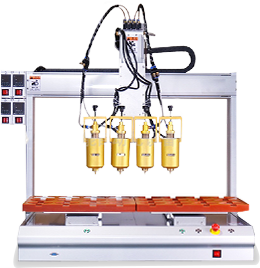

Precision sheet metal stamping of equipment shells uses metal sheets (such as cold-rolled steel, aluminum alloy, etc.) as raw materials, and uses advanced stamping equipment and customized molds to accurately create shell parts suitable for various types of equipment (electronics, industry, communications, etc.) through processes such as blanking, punching, bending, and forming. Through digital control, complex shapes and high-precision dimensional requirements are achieved, providing protection, structural support, and electromagnetic shielding for equipment, helping the integration and miniaturization of equipment. It is widely used in intelligent manufacturing, new energy, communication technology and other fields. It is a key link in modern equipment hardware manufacturing and ensures stable operation and appearance consistency of equipment.
Features
1. High-precision molding
Relying on CNC punching machines, laser cutting machines and other equipment, combined with CAD/CAM programming, the dimensional tolerance can be controlled within ±0.05mm, the opening position and bending angle are accurate, and the internal components of the equipment are installed to ensure seamless connection between the shell and the circuit board, module, etc., and improve the overall assembly accuracy of the equipment. For example, the stamping error of the communication equipment shell, antenna interface, and heat dissipation hole is extremely small, ensuring the stability of signal transmission and thermal management functions.
2. Flexible material adaptation
Compatible with cold-rolled steel plates (high strength, low cost, suitable for industrial equipment), aluminum alloys (lightweight, good thermal conductivity, suitable for electronic consumer equipment), stainless steel (corrosion-resistant, used for medical and outdoor equipment) and other metal plates. Customize the stamping solution according to the equipment usage scenario (such as stainless steel for harsh outdoor environments and aluminum alloy for portable devices) to balance protection, weight and cost.
3. Structural function integration
Multiple functional structures can be integrated in one stamping, such as integrated heat sink fins (replacing additional heat sink components), snap-on mounting brackets (simplifying assembly process), and electromagnetic shielding ribs (enhancing anti-interference capabilities). Reduce subsequent welding and assembly processes, improve production efficiency, optimize the internal space layout of the equipment, and help miniaturize the equipment design.
4. Surface treatment compatibility
After stamping, it can seamlessly connect surface treatment processes such as spraying, electroplating, and anodizing. Spraying can achieve color customization (such as antibacterial coatings on medical device shells and colorful appearances on consumer electronics); electroplating enhances wear resistance and conductivity; anodizing improves the hardness and aesthetics of aluminum alloy shells to meet the diverse needs of equipment for protection, appearance, and functionality.
Features | Technical Parameters / Case | Value |
High precision molding | Tolerance ±0.05mm, precise hole position for communication equipment | Ensure equipment assembly consistency and reduce failure risk |
Material adaptation | Cold-rolled steel / aluminum alloy / stainless steel optional | Flexibly match scenarios to balance performance and cost |
Function integration | One-piece heat sink fins, snap-on bracket | Simplify production and optimize internal layout of equipment |
Surface treatment | Compatible with spraying, electroplating, anodizing | Customize protection and appearance to expand application scenarios |
Product Details
Precision sheet metal stamping of equipment shell runs through the whole process of equipment R&D and manufacturing, from prototype design to mass production, to customize protective "outerwear" for equipment in different industries.
Production process: First, sheet metal process design is carried out according to the 3D model of the equipment to determine the sheet selection (thickness 0.5-5mm is selected as needed) and mold structure (compound mold and progressive mold are suitable for different outputs); secondly, sheet cutting is completed by laser cutting or CNC punching machine, and forming is achieved by bending machine and hydraulic press. Complex curved surfaces are processed by CNC spinning and stretching process; after forming, surface pretreatment such as deburring and grinding is carried out, and then spraying (powder spraying, electrophoresis), electroplating (galvanizing, nickel plating) or anodizing is carried out according to demand, and finally quality inspection (size inspection, salt spray test, etc.) is carried out before leaving the factory.
Application scenarios: In the field of consumer electronics, lightweight, heat-dissipating aluminum alloy shells are created for routers and servers; in industrial automation, high-strength cold-rolled steel protective shells are made for PLC control cabinets and sensors; in the new energy industry, waterproof and corrosion-resistant stainless steel/aluminum alloy shells are stamped for charging piles and energy storage battery packs; in medical equipment, antibacterial spray-coated cold-rolled steel shells are used to adapt to detectors and monitors to ensure hygiene and durability.
Technical advantages: Compared with traditional casting and injection molding shells, precision sheet metal stamping has the characteristics of "short cycle, high flexibility, and strong adaptability", supports small-batch customization and large-scale mass production switching, and quickly responds to market demand; through structural optimization and material innovation, while ensuring the protection performance of equipment, it helps lightweight and energy-saving development, becoming the core manufacturing process of 5G equipment, smart terminals, and industrial Internet of Things hardware, and promoting the upgrade of equipment hardware to more precise and reliable.
 Headquarters tel.
Headquarters tel. E-mail.
E-mail.